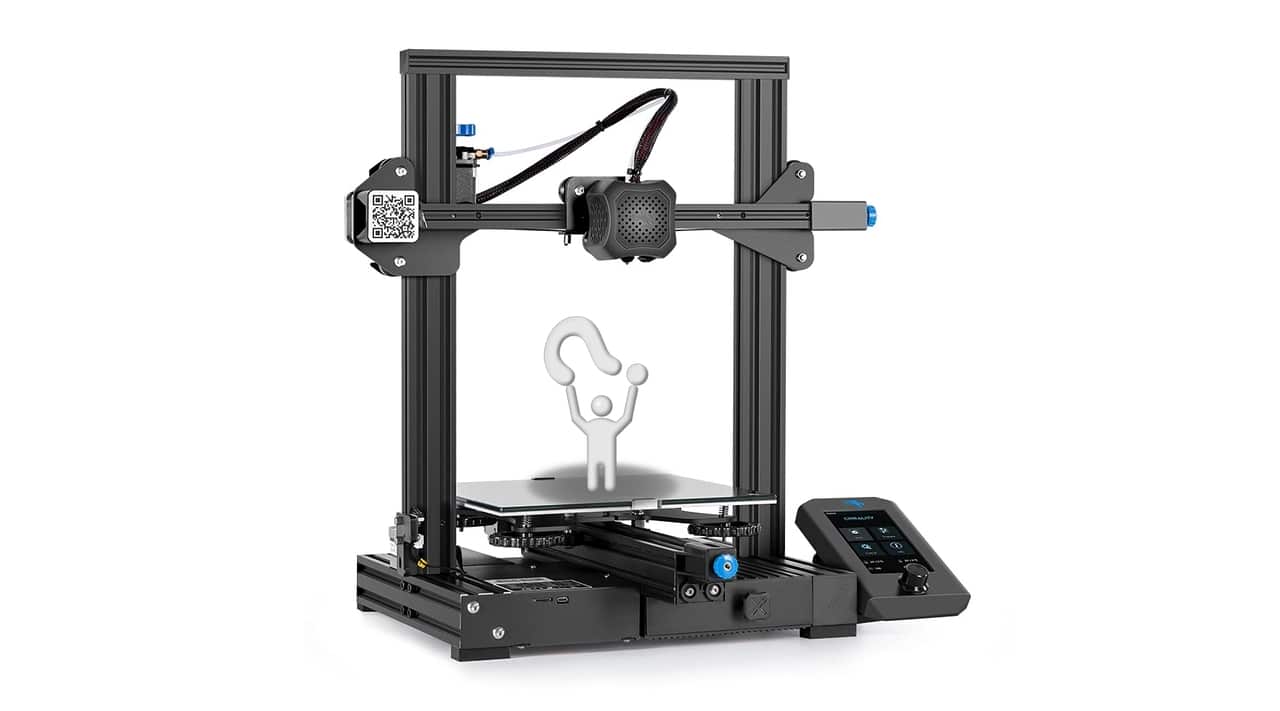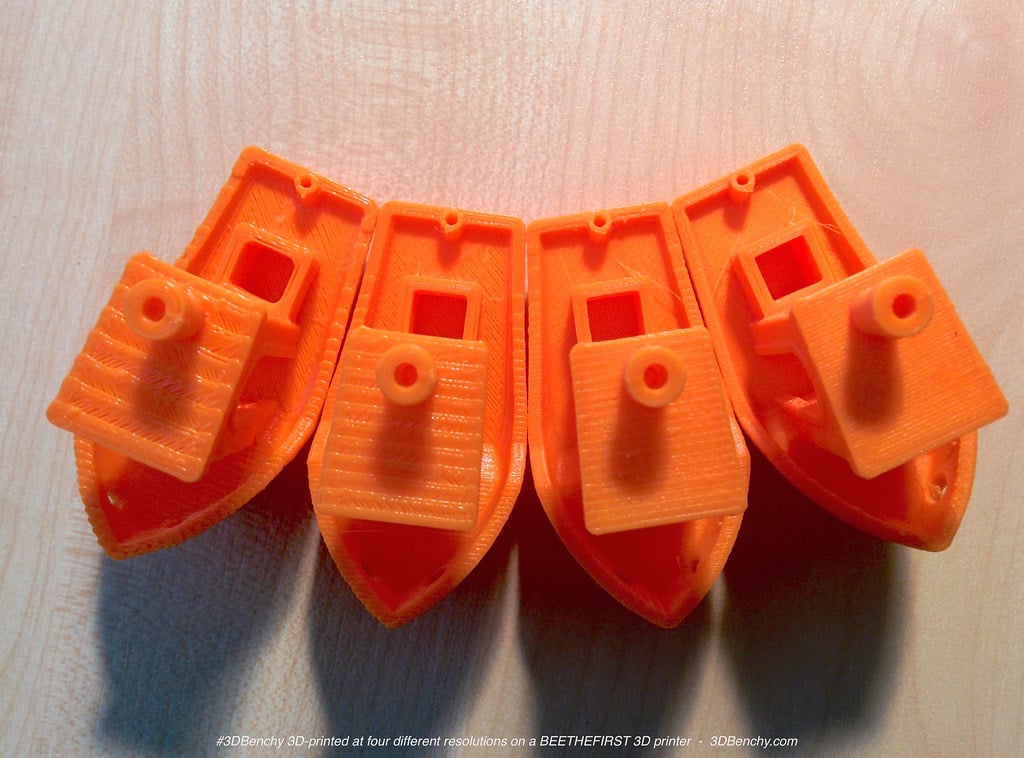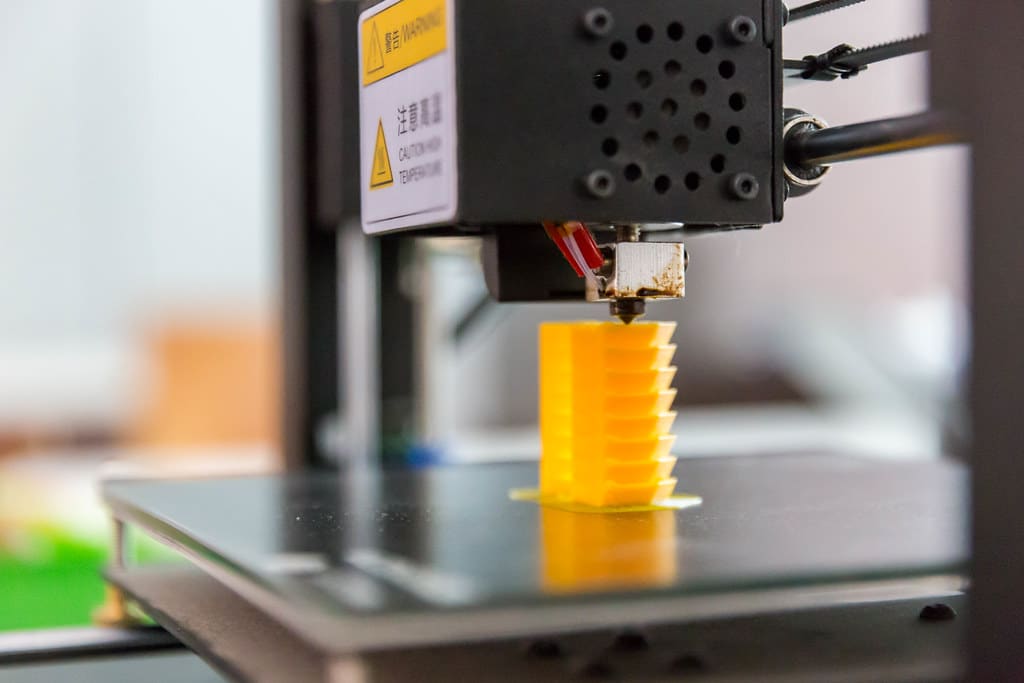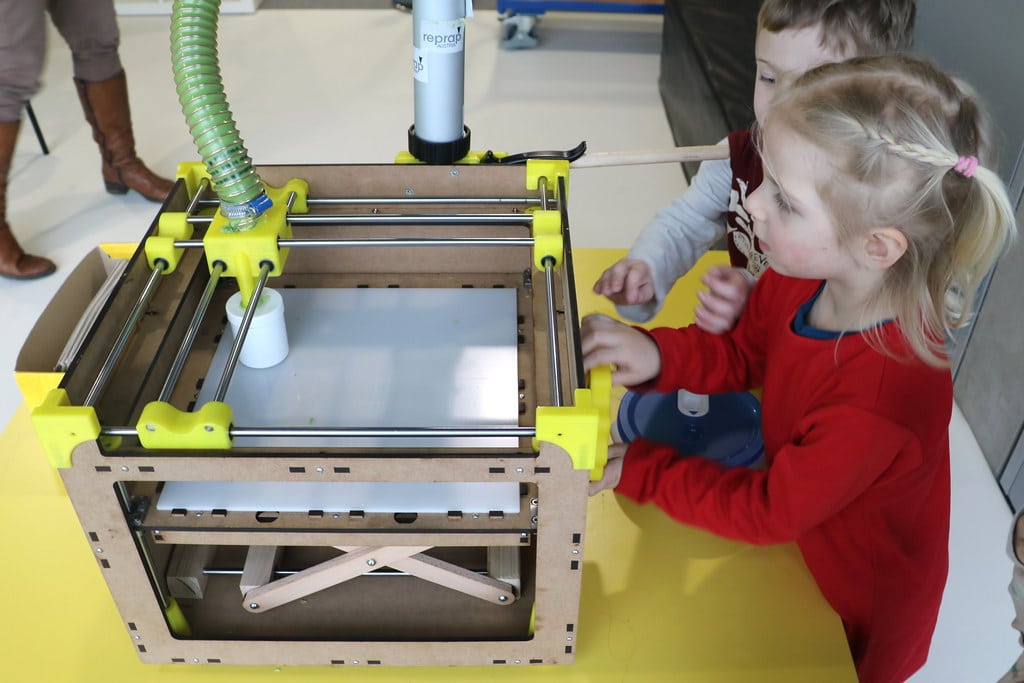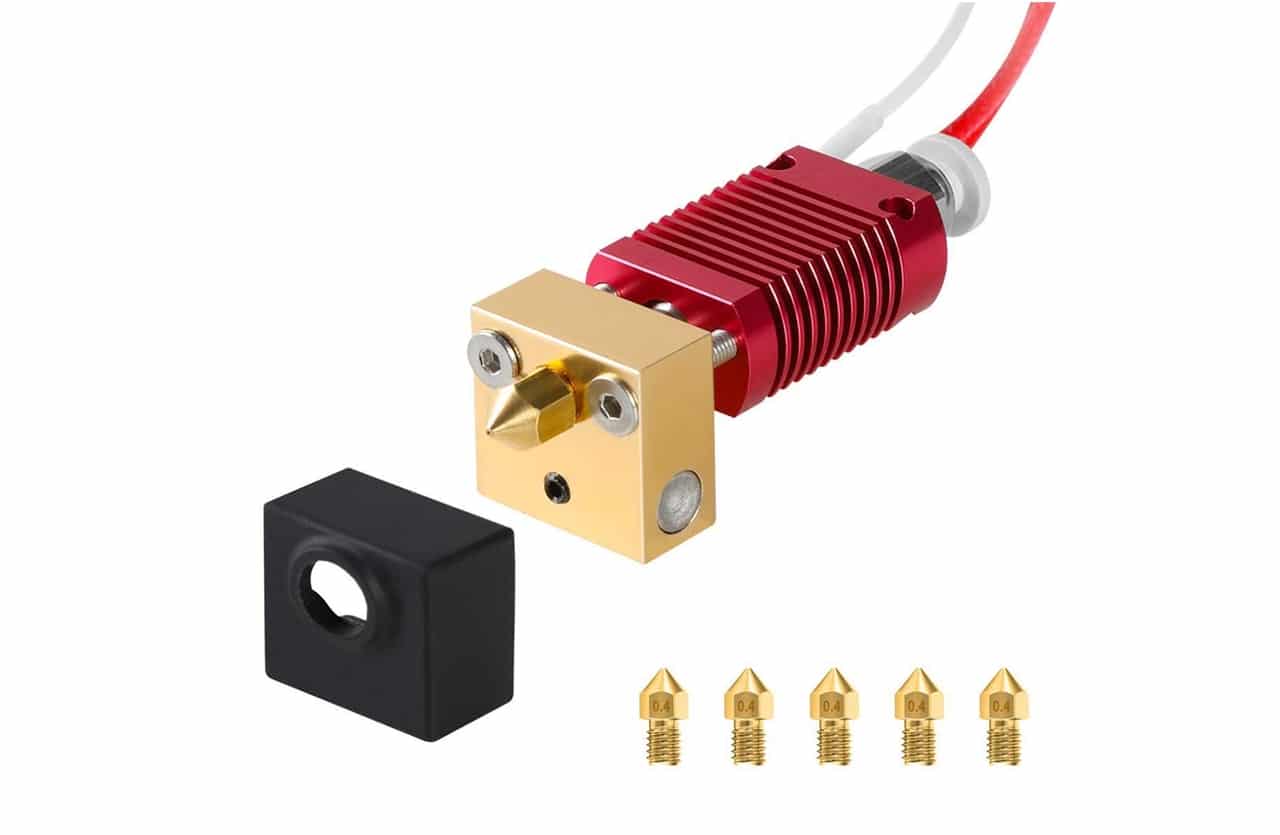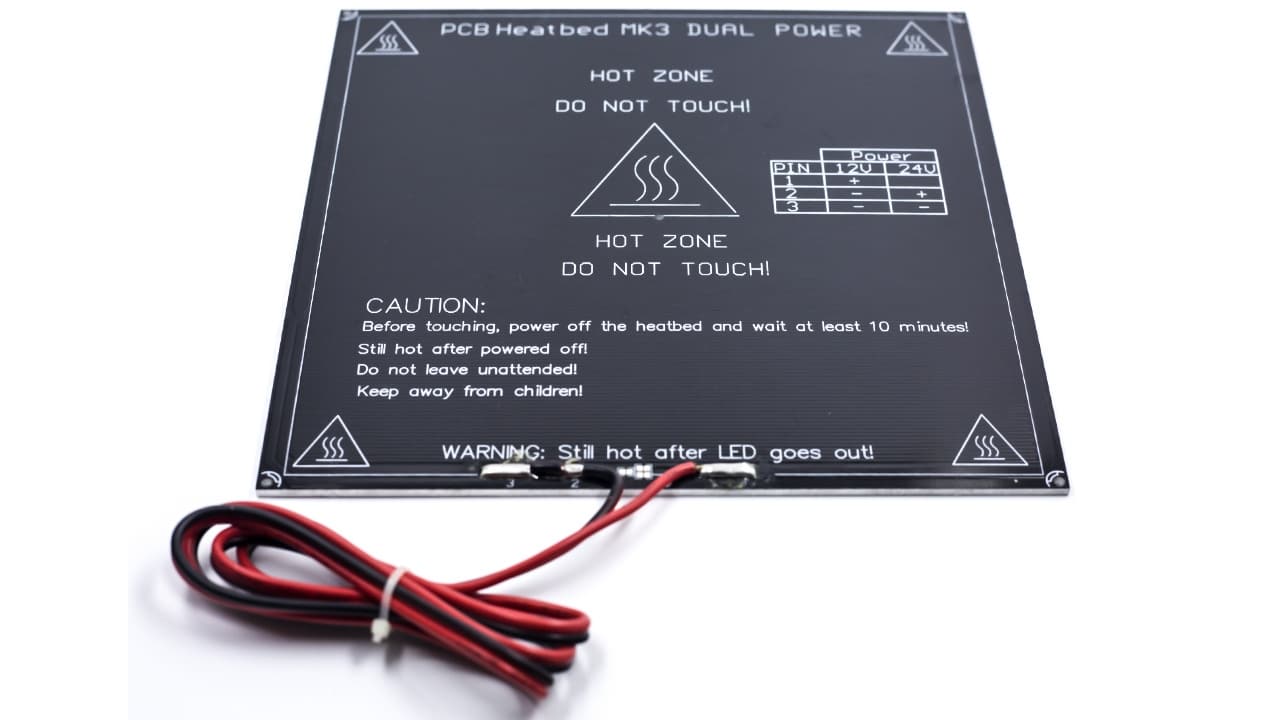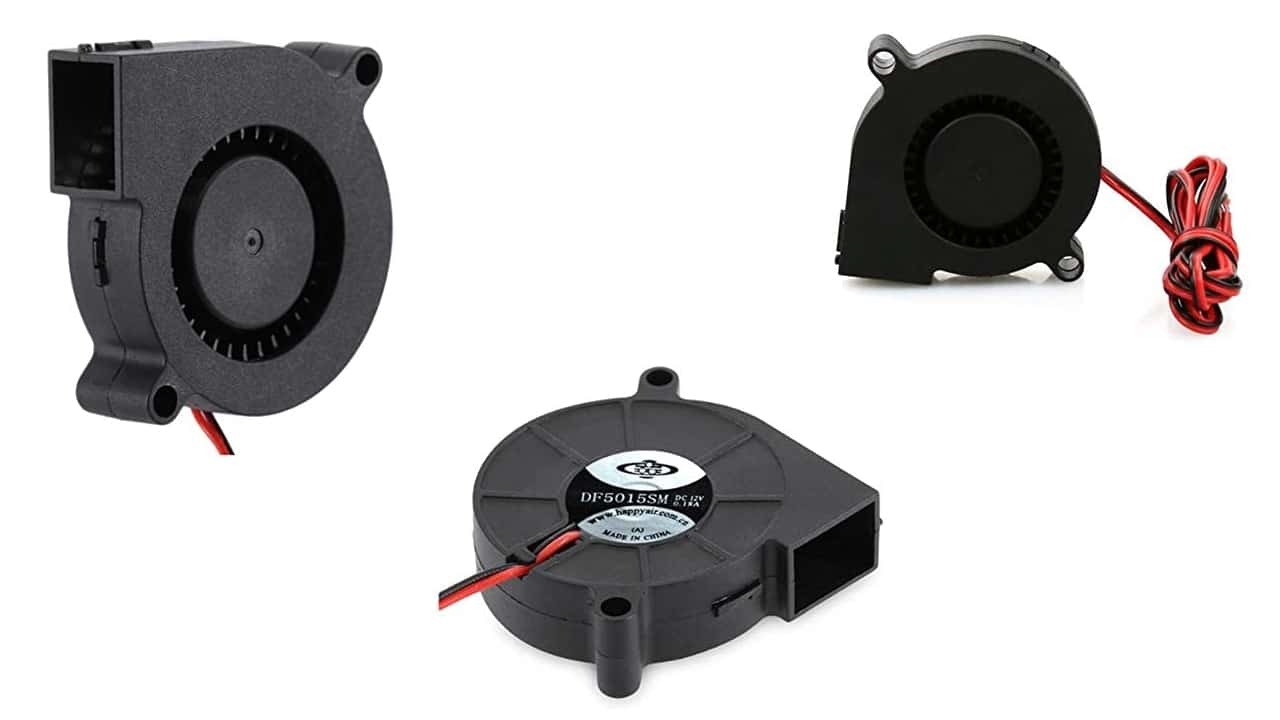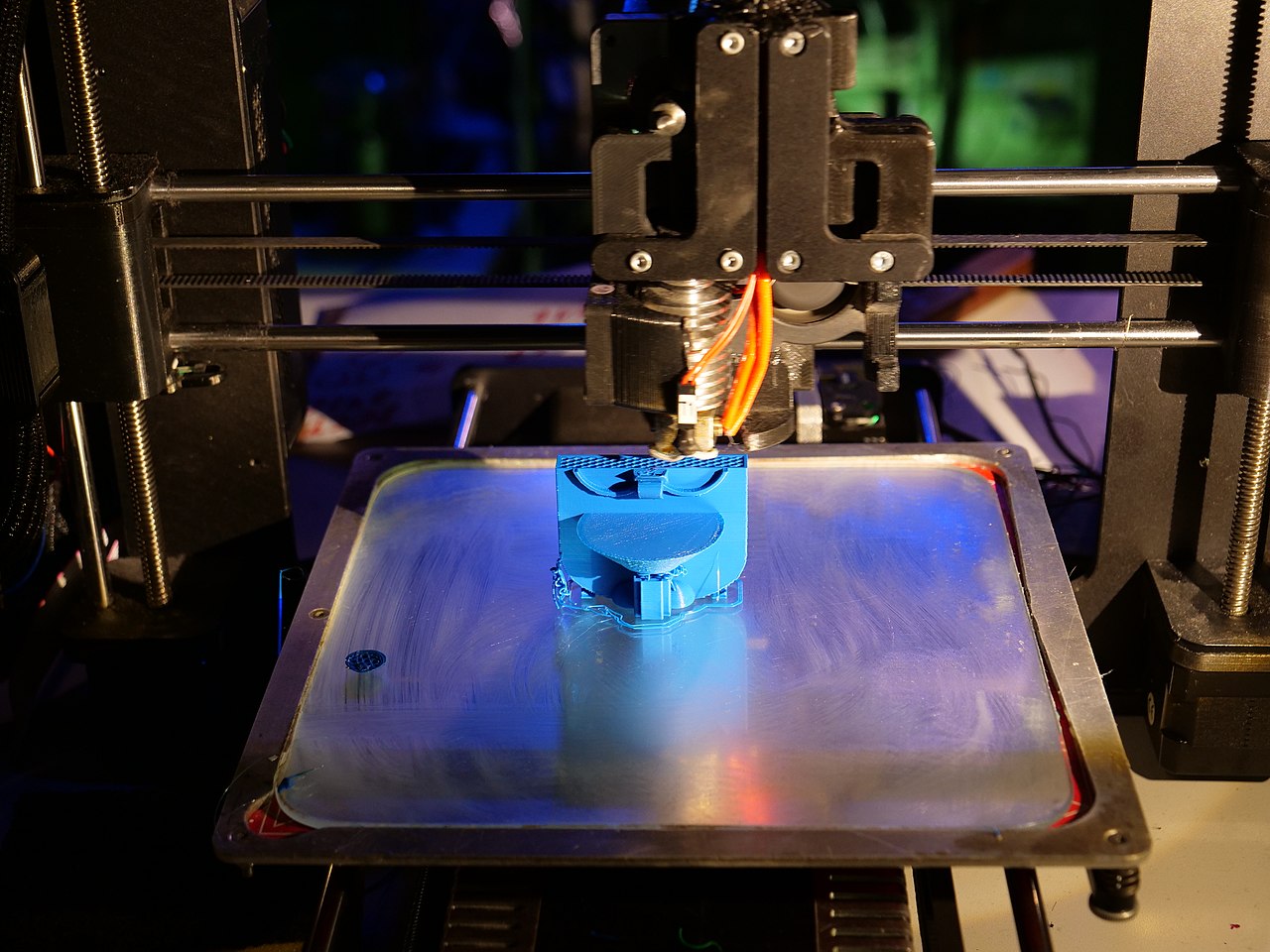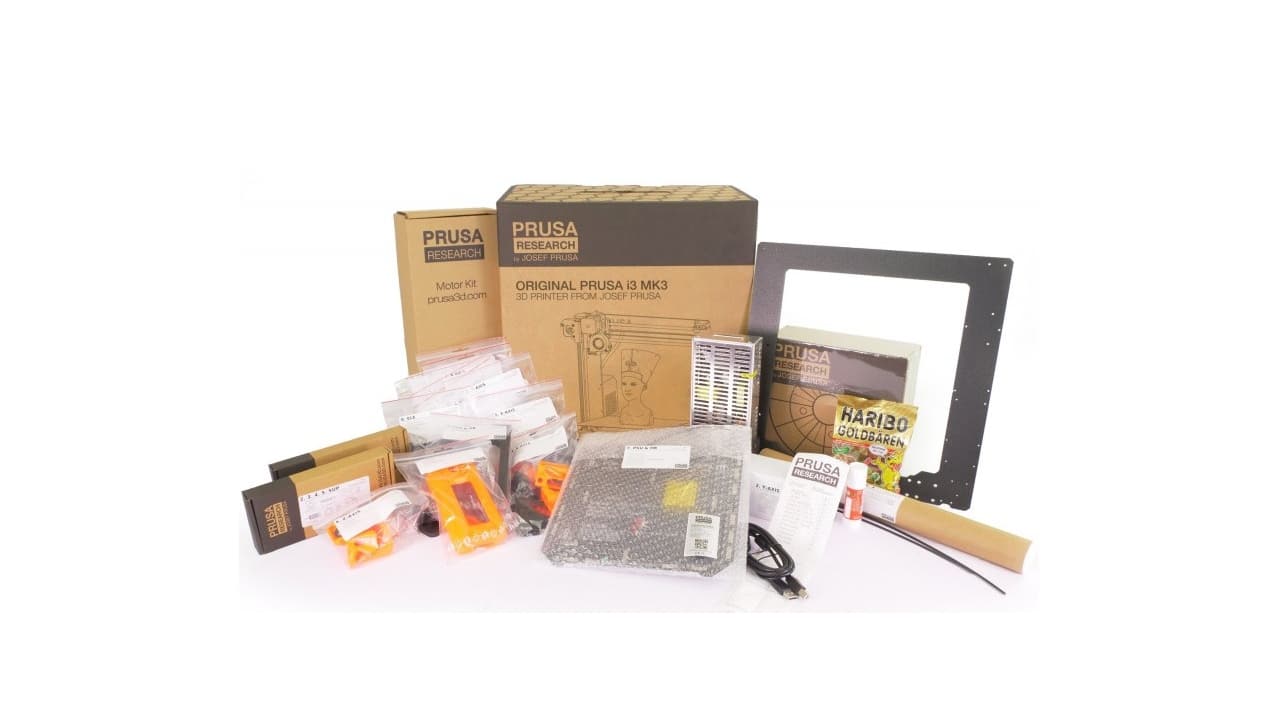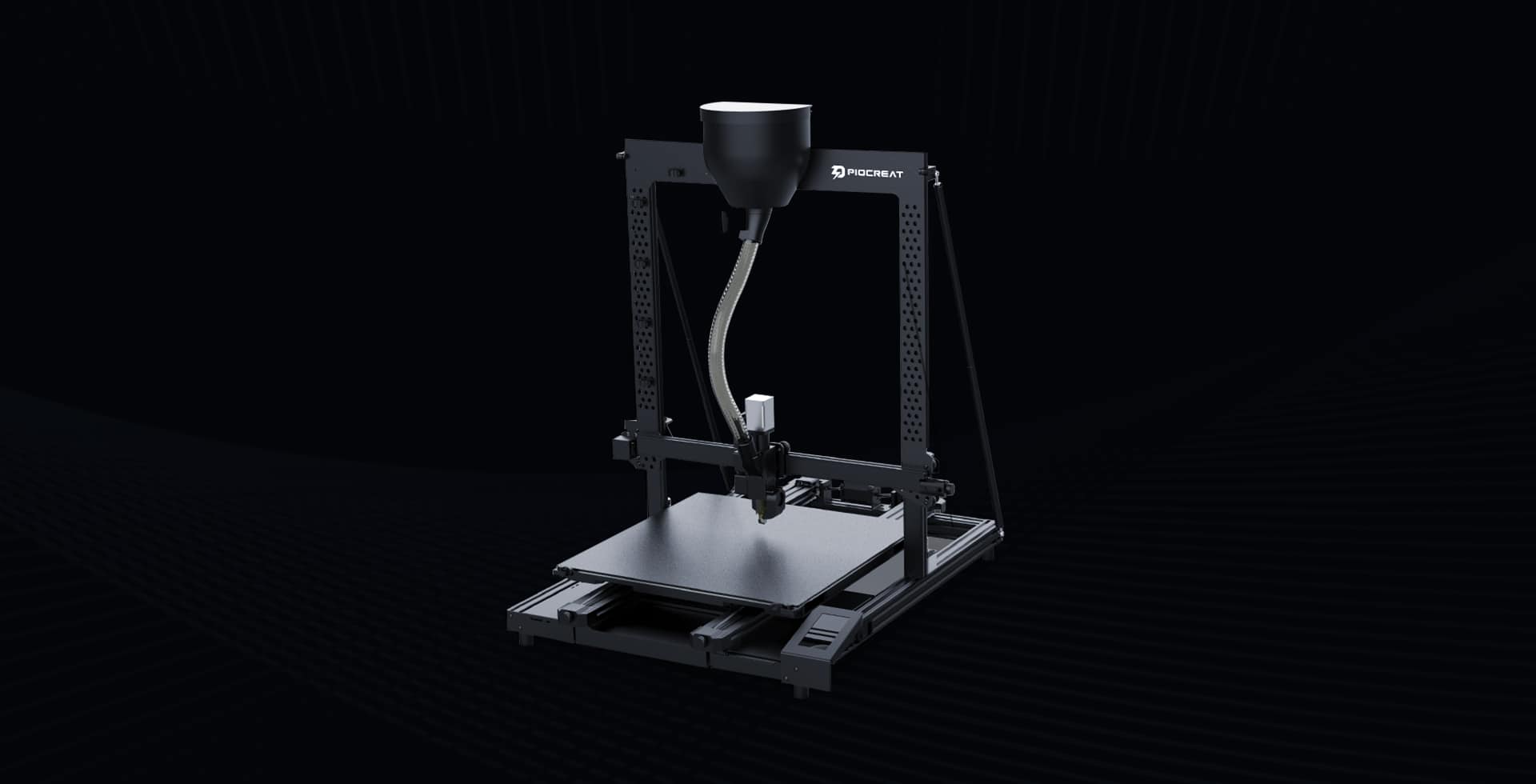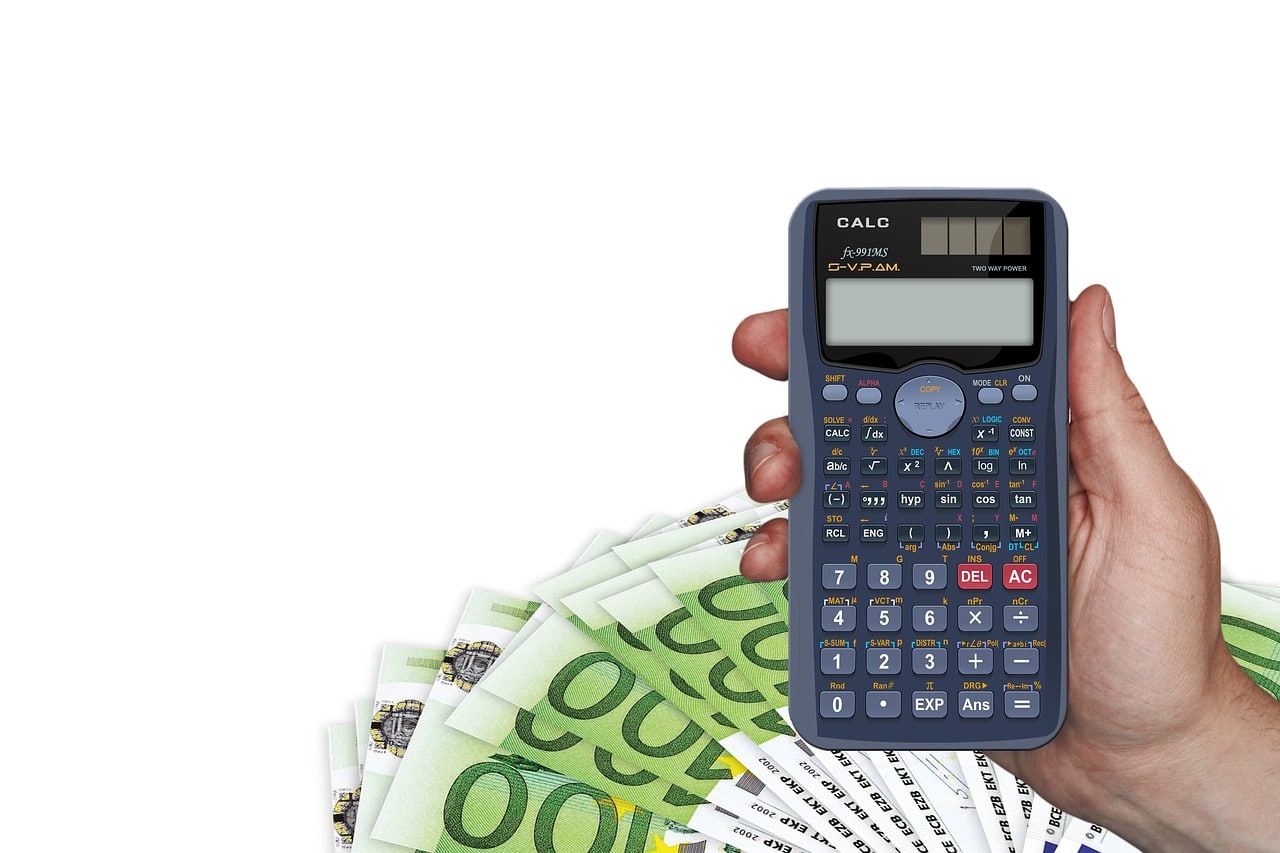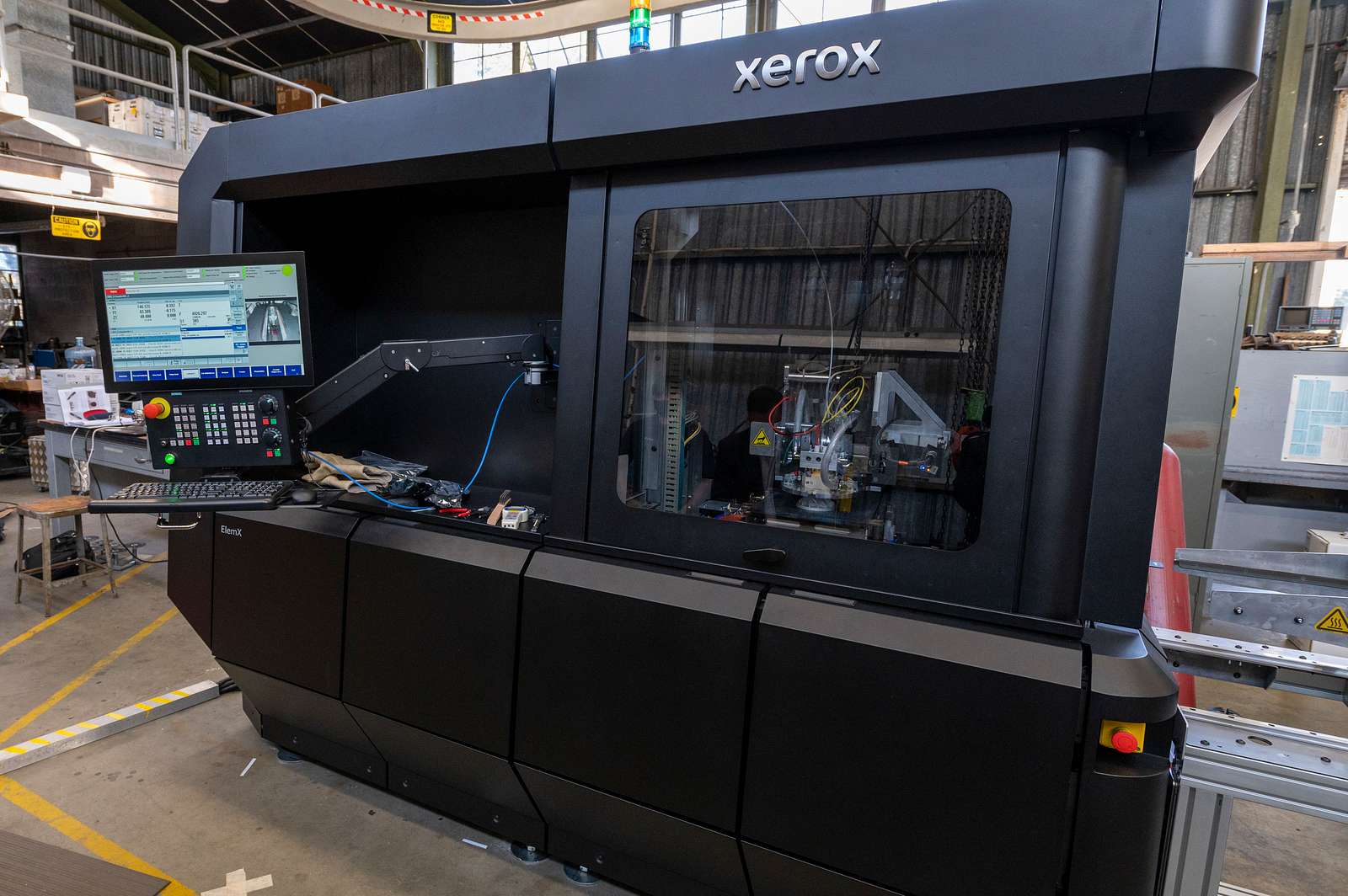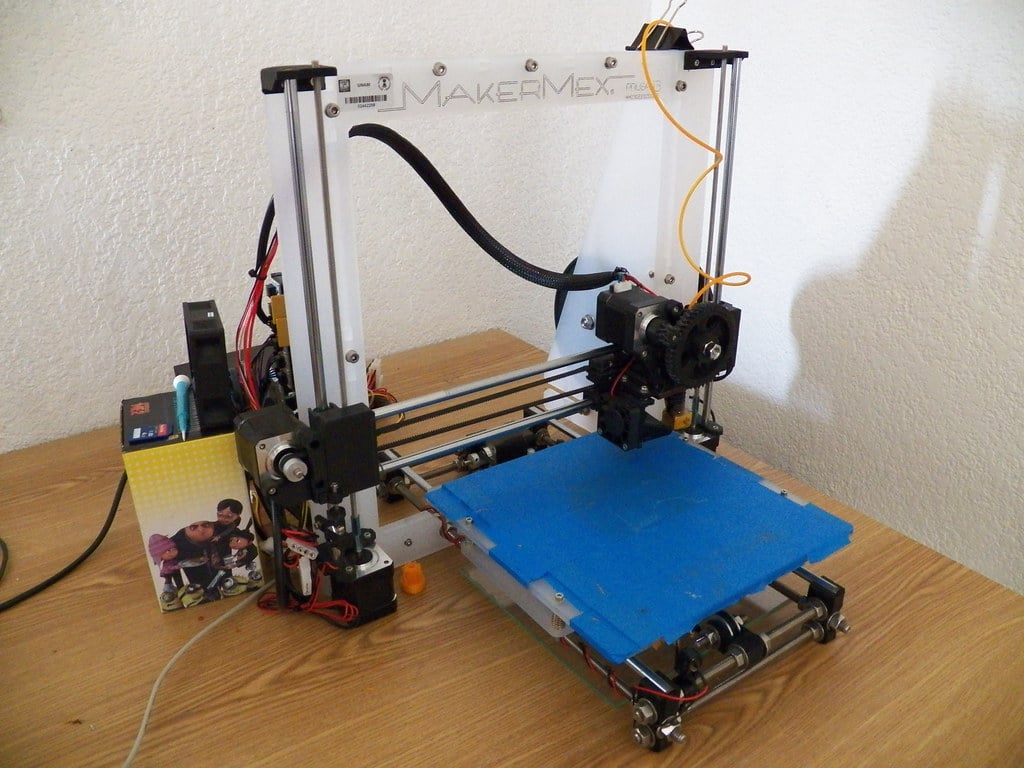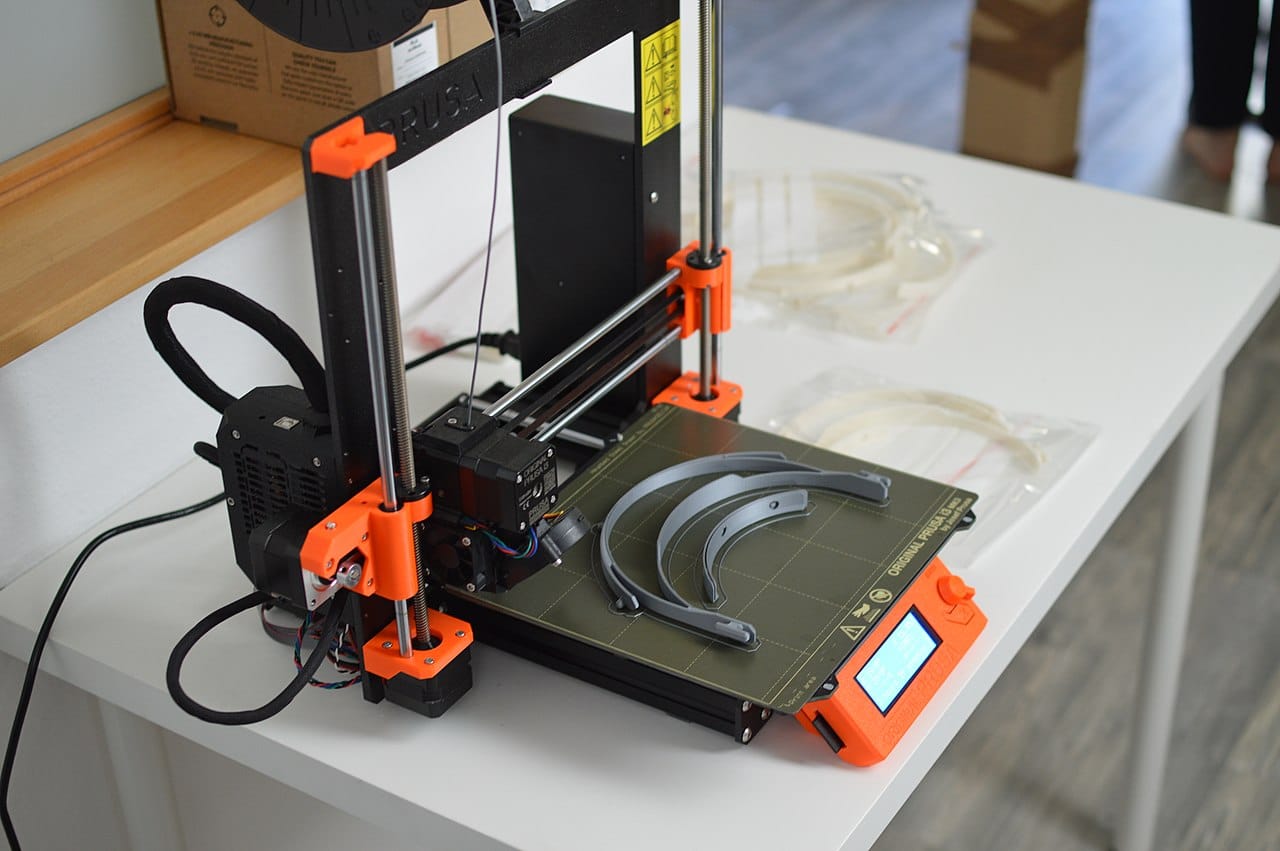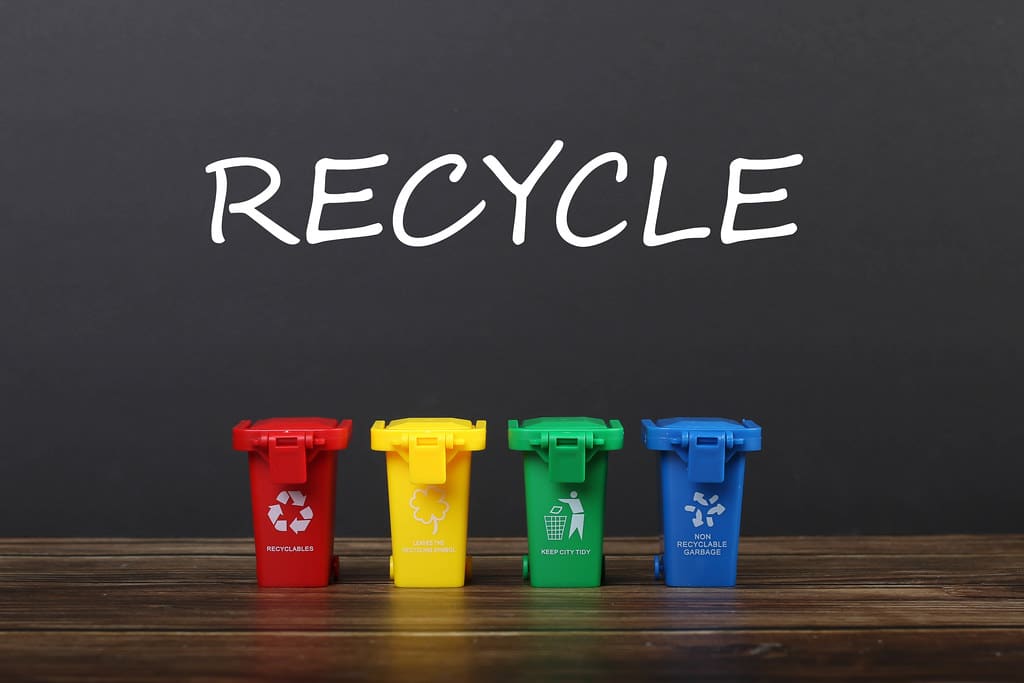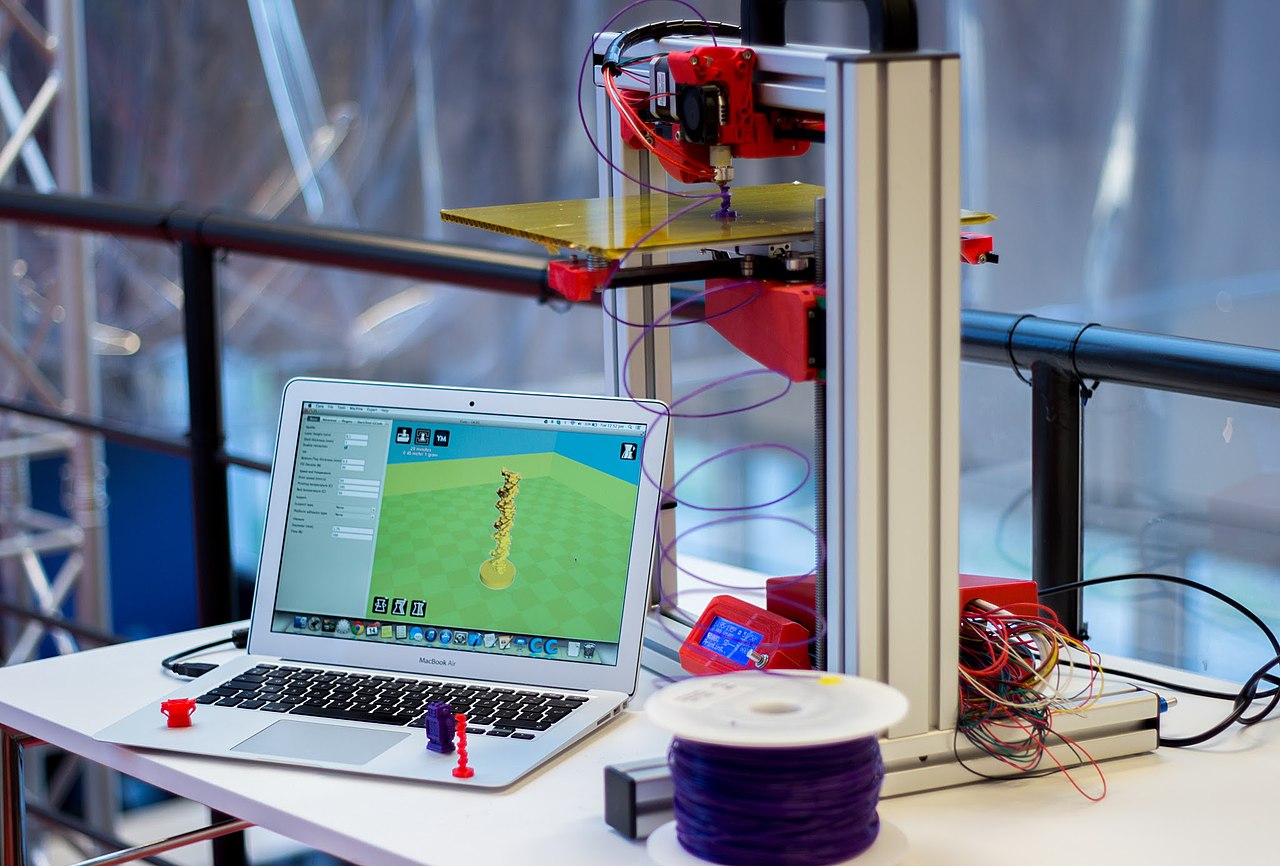
When you have doubts when buying, there is nothing better than knowing the most important features and what type of printer is the best for each case. And that is exactly what we show you in this guide: how to choose a 3d printer. In addition, you will also be able to learn some of the first steps after buying a computer before the first impression.
What to consider before choosing a model
Before worrying about the brand and model of 3D printer you are going to buy, The first thing is to ask yourself a series of questions to understand what kind of 3d printer do you need. Well, those essential questions are:
- How much can I invest? If you are going to buy a 3D printer, either for home or professional use, it is one of the main questions. There is a very wide range of prices, and knowing how much money is available for the purchase can reduce the number of types and models that you have at your fingertips. A kind of filter to avoid wasting time with equipment that you cannot afford, and it will take you to cheap 3d printers, or regular 3d printers for home, and even to industrial 3D printers.
- What do I need it for? Just as important as the first is this other issue. Depending on what you are going to use the 3D printer for, you will need one type or another, within which you can pay. That is, another filter to further reduce the options. From the answer to this question it is derived whether it is going to be a 3D printer for private or professional use, the features it should have, the size of the models it can print, etc. For example:
- Domestic use: Almost any affordable technology and any type of material can be used. Like an FDM and materials like PLA, ABS, and PET-G. Remember that if you want them to come into contact with food or drinks, they must be safe materials.
- Objects for the outside: It can also be an FDM, since the technology does not matter too much in this case, the highest priority here is to choose a material resistant to external climatic conditions, such as ABS.
- Artwork: for artistic works, the best is a resin printer for a quality finish, with great detail. The material can be whatever you need.
- Other professional uses: It can be very variable, from resin 3D printers, to metal ones, bioprinters, etc. Of course, for larger-scale production, an industrial 3D printer is necessary.
- What materials do I need? For example, if it is for home use, you may want it to create decorative objects or figures, so any plastic could work. However, if you are going to use them to make plates, cups, and other eating utensils, you will need food safe plastics. Or maybe you need it for a business to print nylon, bamboo, or maybe metal, or sanitary material… Of course, another factor to consider is the availability of said materials and costs in suppliers.
- Printing technology? I put this point as a subpoint of the previous one since the type of printing technology will determine the materials that your 3D printer can work with. Therefore, depending on the necessary material, you can choose between the different technologies comparing the pros and cons of each. For example, if you need greater precision and better finishes, etc.
- For starters: For individuals who are starting out in the world of 3D printing, the best materials to start with are PLA and PET-G. They are very common and easy to find, and are not as delicate as others during the printing process.
- Middle range: for users who have already started and want something better, they can opt for PP, ABS, PA, and TPU.
- For advanced users: while for professional use you can opt for PPGF30 or PAHT CF15, metal, and many others.
- OFP (Open Filament Program): It is important to choose a manufacturer that has an OFP policy. The advantages are very important, since it will allow you to use third-party filaments easily. This can help save costs on consumables, choose from a greater variety of filaments, and without having to make manual settings for other filaments that are not original, but are compatible. In addition, sometimes the adjustments do not give certainty that the results are as good as the original.
- More: Evaluate if the resulting model needs post-processing and if you have the right tools for it.
- For which operating system? Whether it is a printer for private use or for professional use, it is important to determine which operating system is used on the PC that will be used. The printer you purchase must be compatible with your OS (macOS, Windows, GNU/Linux).
- STL compatibility? Many printers accept binary STL/ASCII STL files directly, but not all. Modern ones have stopped accepting it, since it is a more obsolete format, although there is still software that continues to use it. It is important to know if you will need to print from this .stl format or from another.
- Will I need Customer Service/Technical Support? It is very important to always choose a brand that has a good after-sales service or a good Technical Support to solve any possible problems you may have with your 3D printer. This becomes even more important when it comes to professional use, since an unsolved technical problem means loss of productivity in the company. Also, make sure that they have technical support in your country and that they provide service in your language.
- Maintenance: if the equipment needs special and periodic maintenance, the price of said maintenance, the necessary resources (tools, necessary qualified personnel, time,...), etc. This is perhaps not so important in a 3D printer for individuals, but it is for professional or industrial use.
- Do I need extras? It is likely that, due to your specific needs, you will also require a printer with some additional extras, such as a touch screen (multi-language) where you can see and manage parameters of the printing process, WiFi/Ethernet connectivity to be able to manage it remotely, support for multifilament (and thus be able to print in several colors at the same time, although there are also multicolor filament rolls as an alternative), slot for SD cards or USB ports for printing without connecting to a PC, etc.
- Do I have the right space? For safety reasons, it is important to take into account the environment where the 3D printer will be installed. For example, that there are no flammable materials in the case of using 3D printers where heat is generated, or being in a ventilated place in the case of resin or other products that can generate toxic vapors, etc.
- Open or closed? Some cheap printers have an open print chamber, which allows you to see the process more directly. Instead, they may be a bad idea for homes where there are minors or pets that could destroy the model, touch the toxic resin, or get burned during the process. In these cases, for safety, especially in industrial ones, the best thing is with a closed cabin.
With this You should already have a clearer idea of what you really need, and now you could go on to see how to choose the best 3D printer for your needs.
How to choose the best filament 3D printer and its technical characteristics:
Once you know what type of printer you need, and the price range to which you can adjust, the next thing is to compare the models that fall within that range and know how to choose the best 3D printer. For this, you will have to scrutinize the technical characteristics of each one:
Decision
As can be seen in the image, there is the same 3D printed figure with different resolutions, from the worst resolution on the left to the best on the right. It is obvious that the better the 3D printer resolution and accuracy, the more optimal the result will be and the smoother the surface will be.
When you see the technical specifications of a 3D printer model, you must indicate what is the maximum resolution reached (sometimes referred to as Z height). The smaller the number of micrometers, the higher the resolution. Generally, 3D printers tend to go from 10 microns to 300 microns in layer height. For example, a 10 printer µm can do details down to 0.01mm, while the level of detail will be lower if the printer is 300 microns (0.3mm).
Print speed
Depending on the printing technology and the 3D printer model, more or less can be obtained print speed. The higher the speed, the faster the model will finish printing. Currently you can find printers that go from 40 mm/s to 600 mm/s, and even more in the case of industrial printers, such as the HP Jet Fusion 5200 that can print 4115 cm3/h. It is recommended to choose a speed of at least 100 mm/s as a minimum, that is, to generate volumes at a speed of 100 millimeters every second.
Obviously, the higher the print speed and the more models that can be processed simultaneously, the more the equipment will cost. However, in case of industrial use, it compensates that investment to be able to improve productivity.
Build Area (Print Volume)
Another important factor would be to determine what is the printed model size what is needed Some can be only a few centimeters and others much larger. Based on that, a larger or smaller printer should be chosen when referring to the construction area.
El print volume is usually measured in centimeters or inches. For example, some for home use are usually about 25x21x21 cm (9.84×8.3×8.3″). However, there are sizes below those figures and also above. For example, one of the world's largest 3D printers can create 2.06m printed objects³.
Injector
When talking about extrusion or deposition 3D printers, one of the most important parts when choosing is the material injector. Some benefits will depend on it, including the resolution. This part is composed of other essential parts:
Hot tip
It is a key piece, since is responsible for melting the filament by temperature. The temperature reached will depend on the types of materials accepted by the 3D printer and its power. In addition, these components usually have a heat sink and an active air cooling system to prevent overheating.
Nozzle
This other part is threaded to the hot tip, as you can see in the image, as well as 5 other spare parts. It is the opening of the 3D print head where does the molten filament come out. It is a piece that can be made of brass, hardened steel, etc. There are different sizes (measured in millimeters in diameter, eg: the standard 0.4mm):
- A tip with a larger opening can achieve faster print speeds as well as better layer adhesion. However, it will also have lower resolution. For example, those of 0.8 mm, 1 mm, etc.
- Tips with smaller apertures are slower, but allow for better detail or resolution. For example, 0.2mm, 0.4mm, etc.
Extruder
El extruder is on the other side of the hot tip, and it is the one in charge of extruding the molten material, and it comprises several parts of the “throat” or route that the molten material makes. You can find several types:
- Direct: In this system, the filament is heated on a coil and rollers push it towards the nozzle, passing through the melting chamber and exiting through the opening.
- Bowden: in this case, the heating is done at an earlier stage, close to the filament roll, and the molten material is passed through a tube that takes it to the nozzle.
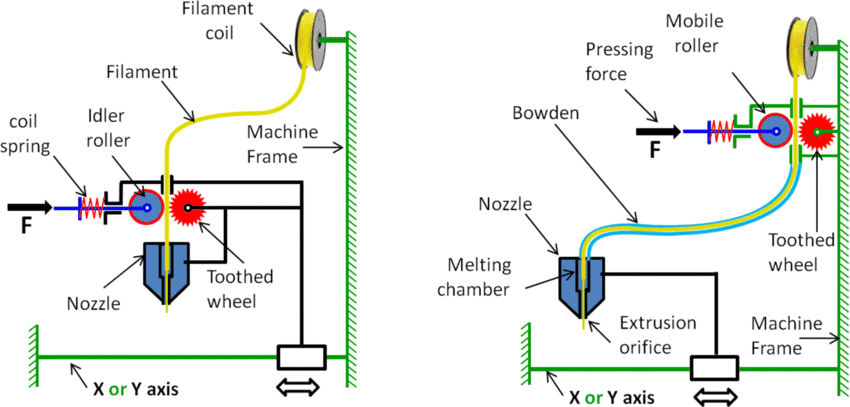
Source: https://www.researchgate.net/figure/Basic-diagram-of-FDM-3D-printer-extruder-a-Direct-extruder-b-Bowden-extruder_fig1_343539037
Each of these extrusion methods has its advantages and disadvantages:
- Direct:
- Advantages:
- Better extrusion and retraction.
- More compact engines.
- Wider range of filaments.
- Disadvantages:
- More weight on the head, which can lead to less precise movements and other problems.
- Advantages:
- per tube:
- Advantages:
- Lighter.
- Fast
- Improves accuracy.
- Disadvantages:
- There are fewer filament types compatible with this method. For example, abrasives cannot pass through the tube.
- You need more retraction distance.
- Bigger engine.
- Advantages:
Warm bed
Not all 3D printers have a heated bed, although they can be purchased separately. This support or base is on which the piece is printed, but it has a particularity with respect to bases or cold beds. And it is that heats up to keep the part from losing temperature during the printing process, achieving better adhesion between layers.
Not all materials need this element, but some such as nylon, HIPS, ABS, etc., they do need to have a heated bed for the layers to stick properly. Other materials such as PET, PLA, PTU, etc., do not need this element, and use a cold base (or the hot bed is optional).
As for the material of the plate, the two most common are aluminum and glass. Each of them with their pros and cons:
- Crystal: They are usually made of heat-resistant borosilicate. It's easier to clean and more resistant to warping, so you'll have a much smoother base surface. However, the problem you have is that it will take longer to heat up and you might need to use something extra to improve adhesion.
- Aluminum: It is a very good thermal conductor, so it will heat up quickly. In addition, it has good adhesion. On the other hand, it can be scratched and warped over time, so it should be replaced.
- Covers: There are also other materials that can be placed on aluminum or glass beds. For example builtank plates, PEI, etc.
- builtank: It has good adhesion, but its surface is quite easily damaged if care is not taken.
- PEI: this type of material plates are more resistant than the previous ones, and also have good adhesion. The drawback is that the first few layers can stick together in such a way that you might have problems later when trying to remove them.
Ventilador
Since the filament 3D printer, and other technologies, require a heat source melts the material, some areas of the head will heat up considerably. Therefore, it is important to have a good cooling system to try to keep the temperature controlled. And for this there are fans for 3D printers.
there are of different sizes and types and, in general, all 3D printers have cooling systems according to the needs of the model. But if the temperature is too high (measured on the extruder head thermal sensor probe), then you should consider upgrading to a better system. To avoid this extra expense, take a good look at the details regarding this part of your future printer.
Integrated camera
This can also be understood as an extra, although it is becoming more and more common for streamers or youtubers that record 3D printing sessions to create tutorials, to show how they have created a piece, or those fantastic timelapses that can be seen online.
These cameras may be included in some series models, but in most cases they will have to be buy it independently. Some users even install several to get video from different perspectives, or to capture images from various angles.
Mounted or to be mounted (mounting kit)
You should also keep in mind if you want the fully finished 3d printer, to be able to use it from the moment you do the unboxing, or if you like DIY and you have tomorrow for these things and you would like to assemble it yourself with one of the kits they sell.
The already assembled ones are usually somewhat more expensive, but they avoid having to assemble it yourself. The mounting kits they are somewhat cheaper, but you will have extra work to do. In addition, in many cases there is no kit option, but they directly sell the complete machine, as is the case with industrial and other brands for private use.
How to choose the best 3D printer: particular cases
In the previous section I focused especially on those with filaments. but they exist some particular cases for which you should also know how to choose the best 3D printer:
Resin 3D Printers
Of course, some of the things said for the filament 3D printer also apply to these others, such as the issue of printing speed, or resolution. However, these other printers lack certain parts, such as the nozzle, heated bed, etc. For that reason, if your choice is a resin printerYou should consider these other points:
- Source for exhibition: They can be lasers, LEDs, LCD screens for faster exposure, etc., as I already explained in the 3D printer types article.
- UV filter cover: it is very important that they are covered, not only because of the vapors that can be given off by the resin, but also because they are photosensitive materials and can be cured with UV radiation. That is why it must be blocked, to avoid exposure in areas where the material should not harden.
- Replacing the FEP foil: It should have a design to facilitate changing this very important foil for the 3D printer.
- Z axis rail: It must be of high quality, well calibrated, to avoid possible deviations during printing.
- Open cover detection: Some include a detection system that stops printing when they detect that the cover has been opened.
- Additional elements: Given the characteristics of these resin 3D printers, it is important that the accessories include a scraper, resin tank, leveling paper, gloves, funnel to pour the resin, etc.
Typically, these types of printers will have a Best Quality finishing than filament, with much smoother surfaces, with greater precision and less need for post-processing.
3D bioprinters
They also share similarities with those of resin or filament, since they can be based on the same technologies. Instead, you are bioprinters They also have other particularities to consider:
- Biocompatibility: they must support materials suitable for medical uses, such as prosthetic and dental implants, splints, prostheses, living tissues or organs, etc.
- Isolation and sterilization: When working with this very sensitive material, it is important that the 3D printer has good insulation to avoid contamination, or maintain good sterilization.
Industrial 3D printers
All the industrial 3D printers or for professional use They can also be made of filament or resin, or based on technologies similar to 3D printers for private use. Therefore, many of the points cited above are also applicable to them. But there are some differences:
- Double extruder: some include a dual extruder to print with twice the material or with two colors at the same time. Others also allow multi-printing, that is, creating several pieces simultaneously.
- Large print volume (XYZ): In general, industrial 3D printers tend to have a considerably larger size, and that also allows you to gain in terms of printing volume, being able to create larger parts. In general, manufacturers usually indicate these dimensions based on the length in which they can grow the model in the X axis, in the Y, and in the Z, that is, width, depth and height.
- Anti-loss system: It is not the same to lose an impression in a particular case than in a company, where the loss is much more problematic (even more so if it is a model in which they have been working for many hours or days). For this reason, many industrial 3D printers have anti-loss systems that avoid this inconvenience.
- Remote monitoring and management: Some printers support process monitoring (with telemetry or cameras) and remote management. For example, from the same wireless network, etc.
- Security: These machines must also include all the necessary elements or protection systems so that the operators do not suffer accidents. For example, there are those with HEPA filter systems and/or activated carbon filters in their cabins to prevent operators from inhaling vapors that are harmful to health, protection screens to prevent burns, cuts, etc., during the process, emergency stop etc
- Sensors and control: many times it is also important to have data on the conditions of the printing process, such as temperature, relative humidity, etc.
- UPS or UPS: uninterruptible power supply systems so that printing does not stop in the event of a blackout or power outage, spoiling the part.
Sometimes it is even likely that each industrial sector needs its own particular characteristics and a exclusive 3D printer.
How much does a 3D printer cost?
The question of how much does a 3D printer cost is very common. But does not have a simple answer, since it depends a lot on the type of technology, the features, and even the brand. However, you can let yourself be guided by these approximate ranges:
- FDM: from €130 to €1000.
- SLA: from €500 to €2300.
- DLP: from €500 to €2300.
- SLS: from €4500 to €27.200.
Printing service (alternative)
You should know that there are several online 3D printing services, so that they take care of printing the model you send them and send you the result by courier to the address you choose. That is, an alternative to having your own 3D printer. This could be good in cases where only occasional printing is desired, for which it is not worth buying the equipment, or for some cases where a specific part is needed that is only possible with an expensive industrial printer model.
Services and costs
Some known services and recommended are:
- Materialise
- protolabs
- Innova3D
- printers
- createc3d
- craftcloud3D
- 3D Experience Marketplace
- xometry
- sculpting
As for the the costs, not all services are equally transparent in the way prices are calculated, but they are generally based on the sum of:
- Cost of the chosen material: includes both the piece itself and the extra material needed if supports are needed). It will also vary depending on the chosen resolution and speed.
- Workforce: This includes expenses such as operator time spent on printing, cleaning, sorting, finishing, packaging, etc.
- Other costs: Other expenses are also added for the energy consumed, to compensate for the costs of equipment maintenance, software licenses, compensation for the time that the machine is kept busy and cannot produce other jobs (especially when a unit or few), etc
- Shipping costs: what it costs to send the order to the address provided. Normally it is done through a subcontracted transport agency, although some services may have their own fleet of delivery vehicles.
How do they work?
La way of operating of these services is usually very simple:
- Rarely do these 3D printing services design the model themselves, so you need to send them the file (.stl, .obj, .dae,…) in the format they accept. This file will be requested during the ordering process, along with your personal data.
- Select the material, printing technology, finishing (polishing, painting, QA or quality control of finished parts to discard defectives, and other post-print treatments), and other printing parameters. You should know that some services may not accept a single unit, and a minimum of print copies (10, 50, 100,…) is requested to be profitable.
- Now the budget will be calculated based on the model and the chosen parameters. And it will show you the price.
- If you accept and add it to the shopping cart, and once you finish, they will take care of manufacturing it.
- Then will be sent to you to the address you have chosen, generally within 24-72 hours. Some services have free shipping if you go over a certain amount.
Advantages and disadvantages
Of course, these services have its pros and cons:
- Pros:
- They do not need to make an investment in printing equipment or materials.
- Zero maintenance, since the service company takes care of it.
- Access to advanced and fast 3D printers that you may not be able to afford.
- Wide range of materials to choose from, since these services usually have several types of industrial printers.
- Cons:
- It is not profitable for frequent printing, since in the long run, buying your own 3D printer will be amortized.
- If it's a prototype that has some kind of IP, or is under secrecy, that's not an option.
How to choose the best 3D printing service?
Just like when you pick a copy shop to print You make your papers based on the price, quality, type of paper accepted, color, etc., there are also some factors that you should pay attention to. It is not as simple as entering the service's web page and clicking.
For choose the best 3D printing service for your case:
- Materials: You should look for that service that allows you to print on the right material. This will depend on what you want the piece for. For example, you probably need it for jewelry and want it to be made of gold, or maybe you will use it for food and it needs to be safe, or for an aircraft and it needs to be light, or even a replacement part for an old engine and need to withstand friction and high temperatures. There are specific services for professional use, which make the parts go through strict controls so that they comply with the mechanical and chemical specifications. Other services may be cheaper and cater to those looking to print an object for fun.
- Certifications, license, privacy and confidentiality:
- It is important that if it is going to be a component of any system or machine, it passes the standards set for that component. For example, the ISO:9001 standard, or others from the EU. There are also some services that reserve the right to exclude models with certain certificates, such as ITAR to manufacture defense components or military use.
- When you upload a file with the model to print, many services assume that you have accepted a non-exclusive license, so they would have the right to continue printing your model for third parties. If you don't want this to happen, you should look for a service that allows you to sign a non-disclosure agreement.
- In addition, some part designers also need to sign contracts with confidentiality and privacy clauses to prevent the competition from copying it, or from sending them a copy of the file with the model that you have sent them. You need it? Can you guarantee the service?
- Batch production capacity and scalability: Some small companies can only make a small number of parts. On the other hand, some large ones have several 3D printers, being able to manufacture 1000 or more parts in a period of time. It is important to choose a service that can meet the demand for parts, and even if more needs to be produced, that can take on that extra production.
- Time: not all have the same speed of production, some can have it in one day, others are likely to take longer. If you need the results urgently, better go to services that guarantee faster.
- Price: Of course, being able to afford the costs is an important factor, and comparing services to use the cheapest one is too.
How to install a printer on the computer
There is no generic procedure to install any 3D printer model. Therefore, it is best to read the manual of your printer for more details, or the wiki or documentation in case of being an open-source 3D printer. However, the generic procedure that fits the vast majority consists of these steps:
- Connect the printer to your PC using USB cable (or network).
- You must have Controllers for your 3D printer model for your operating system (GNU/Linux, macOS, Windows,…), as it will not work with USB drivers for other devices. For example:
- Drivers for printers based on Arduino boards.
- Drivers for standard CH340/CH341 chips (MacOS, Windows, Linux).
- Specific drivers from the official website of the manufacturer of your 3D printer model.
- Some printers include software called Repeater-Host, others need to install third-party software. For example, like the free Repetier software. Thanks to this software you will be able to add models to the print queue, scale them, duplicate them, divide them into slices, control the 3D printer connected to your PC, vary parameters, and generate a file with the model to be printed in the exact format accepted by your printer. , such as G-Code.
- Install the software for CAD design or modeling, in other words, some 3D printing software.
- When printing the part, load the filament or resin first on your printer.
- On first startup, you should calibrate the bed (more information here).
The 3D printer it should work. if you don't, check that:
- The 3D printer is on.
- The 3D printer is connected to the PC.
- If you have chosen the right port.
- You have configured the correct speed (baud) parameters.
- If you are well connected to the network (if it is on the network).
How to print your first part
Now that your 3D printer is installed and supposed to be working, it's time to perform your first test 3D print. To do this, print something very simple, just to check that it works well. you can use a Hello world!! u Hello World!, which is nothing more than a simple and small geometric figure, such as a 20x20x20mm cube. If the shape and dimensions are correct, your printer is OK.
Before printing, remember to make two previous steps very important:
- Heating: the extruder must be at a suitable temperature for the filament to melt, which is usually above 175ºC. If the temperature is not adequate, it can generate failures in the part to be printed.
- bed leveling: The printer bed or platform needs to be leveled. This can be done manually or automatically. This is important so that the piece grows straight and so that the first layer adheres well to the bed.
As for the the steps to print a 3D model, are very similar to the ones you follow to print on paper with a conventional printer:
- From the software where the 3D design of the model you want to print is located.
- Click on the Print option, or in some programs it may be in the Send to 3D Printer section.
- Configure the printing parameters.
- print! It is time to be patient, as it may take...
This steps may vary slightly in each software, but it is not complicated in any case.
Recycle 3D printer plastic
You have printed a piece that you no longer need, perhaps a print was half finished or defective, you have some filament left over,... If any of this happens to you, you should know that Can 3D printer plastic be recycled?. To do so, you have several possibilities:
- Use a No products found. like this, or like the filastruder, filabot, FilFil EVO, V4 Pellet Extruder, etc., to use all the leftovers and create a new recycled filament yourself.
- Reuse the parts you no longer need for other purposes. For example, imagine that you have printed a cup that you no longer use, you could give it another use such as a pen. Or maybe you've printed a hollow skull and want to transform it into a flower pot. Here you will have to put your imagination to run…
- Turn a misshapen object into an abstract art sculpture. Some impressions fail and leave curious shapes as a result. Don't throw them away, paint them and turn them into an ornament.
- The spent filament spools and resin cans themselves can also be recycled at a suitable recycling point or reused for other purposes.
Is it possible to convert 3D printer to CNC?
The quick answer is yes, it is possible to turn a 3D printer into a CNC machine. But the procedure can vary a lot depending on the type of printer and also the type of CNC tool you want to use (milling, drilling, cutting...). In addition, from HWLIBRE we do not recommend it, since it can void the guarantee or make your printer unusable.
By example, imagine that you want to do surface milling, for this, you will need to mount an electric motor with its power supply on the head of the 3D printer instead of the extruder. They even exist supports for this type of projects ready to print. On the motor shaft, you will have to use a milling bit or drill bit, and the rest will be to send a printing process with the design you want to carve to your printer, and the head will move to draw it, with the difference that instead of Adding layers of material, the engine will carve the drawing on the wood, methacrylate plate, or whatever...
More information
- Best Resin 3D Printers
- 3D scanner
- 3D printer spare parts
- Filaments and resin for 3D printers
- Best Industrial 3D Printers
- Best 3D printers for home
- Best cheap 3D printers
- All about STL and 3D printing formats
- Types of 3D printers
- 3D Printing Getting Started Guide
